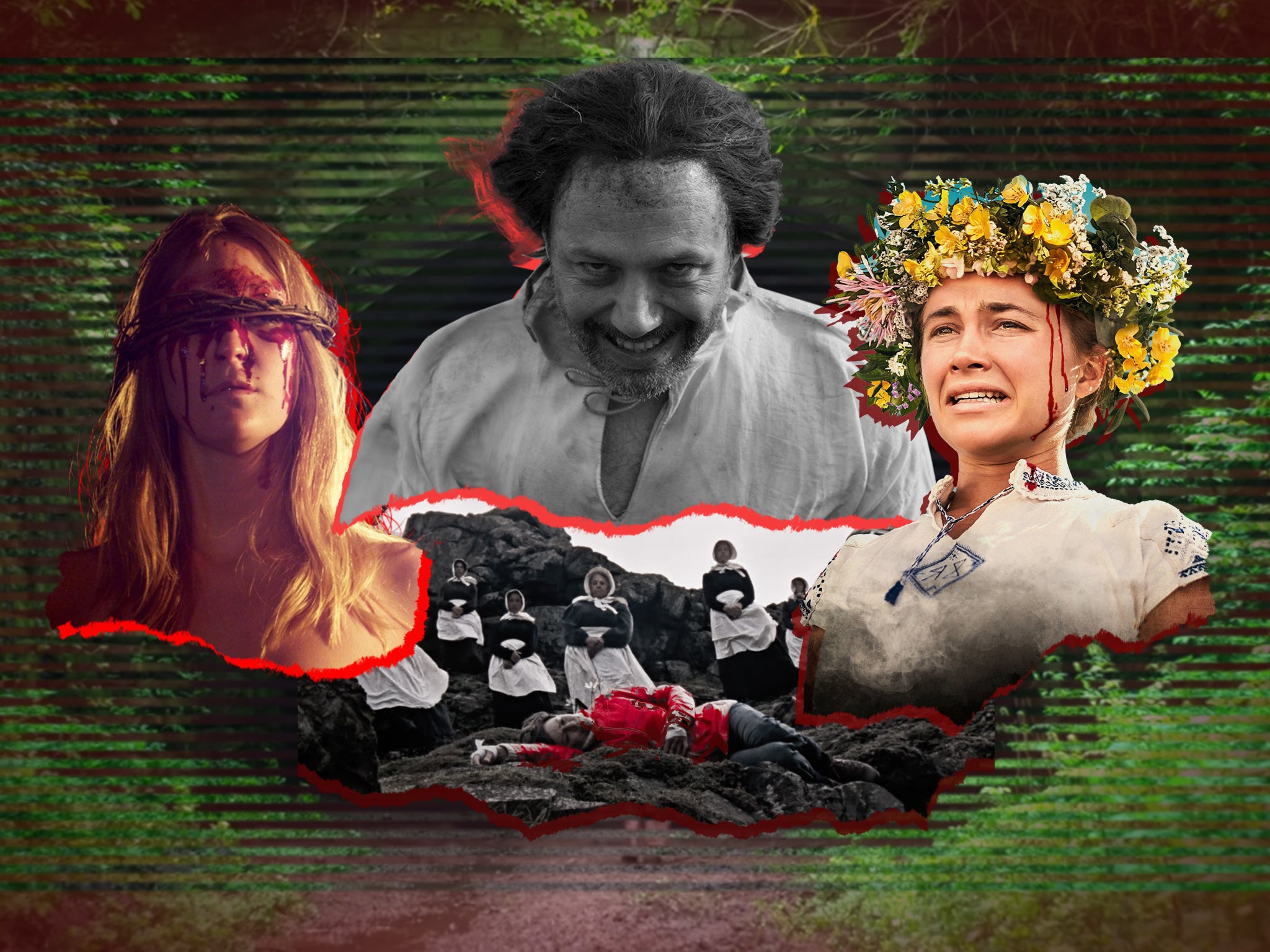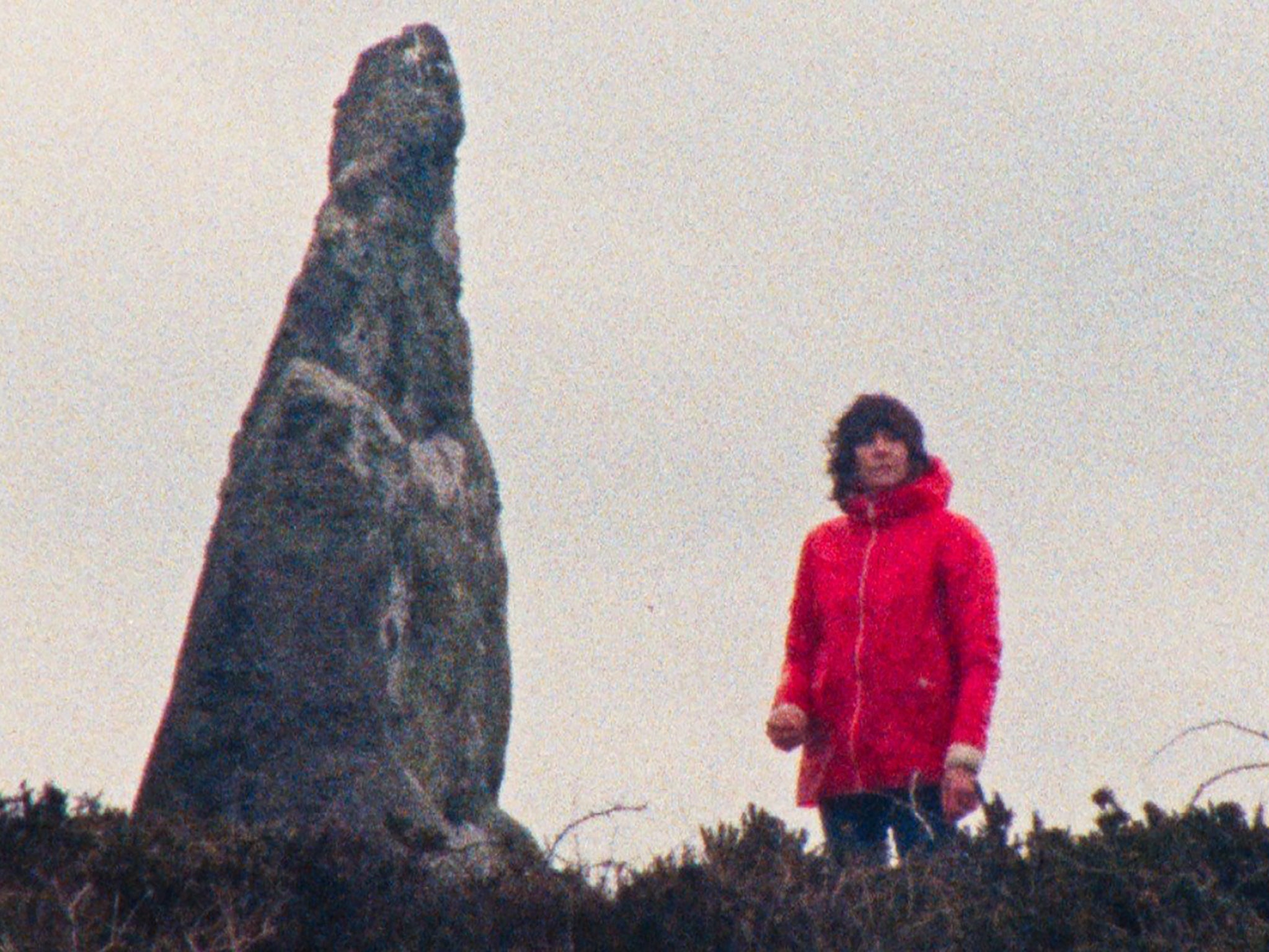From Enys Men to The Witch: What’s behind cinema’s folk horror boom?
Eloise Hendy delves into the genre that turns the pastoral idyll into a place of terror, and asks what’s behind this obsession with the natural world, magic cults, standing stones and feminine powers


Your support helps us to tell the story
From reproductive rights to climate change to Big Tech, The Independent is on the ground when the story is developing. Whether it's investigating the financials of Elon Musk's pro-Trump PAC or producing our latest documentary, 'The A Word', which shines a light on the American women fighting for reproductive rights, we know how important it is to parse out the facts from the messaging.
At such a critical moment in US history, we need reporters on the ground. Your donation allows us to keep sending journalists to speak to both sides of the story.
The Independent is trusted by Americans across the entire political spectrum. And unlike many other quality news outlets, we choose not to lock Americans out of our reporting and analysis with paywalls. We believe quality journalism should be available to everyone, paid for by those who can afford it.
Your support makes all the difference.In Enys Men – the much-anticipated new film written and directed by Cornish filmmaker Mark Jenkin, whose last feature, Bait (2019), earned him a Bafta for Outstanding Debut – a woman in walking boots, jeans, and a translucent red anorak trudges across gorsy moorland towards a cliff face. She clambers down, perches on a rocky outcrop, and stares intently at a few white flowers as they sway in the wind, high above clamorous waves below.
Every day she studies these flowers. Then, every day she drops a rock into an abandoned tin mine’s inky depths, and stands listening for a distant thud. She returns to an isolated, ivy-covered cottage. A standing stone sticks out of the landscape like an ancient dagger-head. The woman pulls the cord of a power generator, makes a pot of tea, listens to the scratchy, indistinct noises of a radio communication device, and, in a logbook, records the date – April 1973 – and the words ‘”no change”. At bedtime, by candlelight, she reads an environmental manifesto titled Blueprint for Survival. Snatched glimpses of the cover reveal a quote in red: “Nightmarishly convincing… After reading it nothing quite seems the same any more.”
This phrase goes to the heart of this strange, spectral work of cinema. Even calling it a film feels wrong somehow; it feels more like a fever dream, or hallucination. For, almost as soon as the unnamed wildlife volunteer’s routine comes into focus for the viewer, it starts to fracture. Lichen blooms on her flowers and on a scar that stretches across her abdomen. Grubby-faced men holding pickaxes stare at her from the mineshaft; sailors lost at sea grin and drip outside her front door; a girl in white bell bottoms stands on the outhouse roof. Steadily, the whole far-flung landscape begins to teem with apparitions. They are both convincing and nightmarish; nothing quite seems the same any more. Is the volunteer losing her mind? Or merging with an ancient Cornish terrain – one riddled with myth and old scars, like her lichen-sprouting stomach?
In a statement accompanying Enys Men (which is pronounced Ennis Main, and means “stone island” in Cornish), Jenkin suggests his starting point for the film was a single question: “What if the landscape was not only alive, but sentient?” Long fascinated by Cornish standing stones and their accompanying legends – one of which imagines the rocks as the petrified remains of a group of young girls, punished for dancing – Jenkin found himself imagining what these stones and remote moorlands might get up to under cover of darkness. “Almost inevitably, considering the setting,” he writes, “the idea was inclined towards folk horror.”
Jenkin is far from the only contemporary filmmaker inclined in this direction. Indeed, for at least a decade we have been in the midst of a magnificent folk horror revival. But why has this strange subgenre of standing stones and spectral presences captured the imagination of filmmakers and audiences in the UK and beyond? What does the folk horror boom say about our contemporary fears?
The term itself only went mainstream in 2010, when Mark Gatiss used it in the BBC documentary series The History of Horror to describe three British films now known as the Unholy Trinity: Witchfinder General (1968), The Blood on Satan’s Claw (1971), and The Wicker Man (1973). It is certainly no coincidence then that Enys Men is set in 1973, as, making the film, it was precisely these cinematic roots Jenkin wanted to rummage in. “For me,” Jenkin writes, “folk horror has very English connotations. The stripping away of a pastoral layer of Merrie England to reveal an earlier Celtic and pagan past full of perceived brutality, deviance and threat.” Yet, since Gatiss first invoked the genre, cinemagoers on both sides of the Atlantic have been offered up Ben Wheatley’s Kill List (2011) and A Field in England (2013), Paul Wright’s For Those in Peril (2013), James Crow’s Curse of The Witching Tree (2015), Robert Egger’s The VVitch (subtitled “A New England Folktale”), Ari Aster’s Midsommar, Scott Cooper’s Antlers (2021) and, most recently, Alex Garland’s Men (2022). All present nightmarish visions of a deviant, occult and cult-addled countryside. And that is far from an exhaustive list.
As folk horror scholar Adam Scovell has written, at its heart the genre is about “the evil under the soil, the terror in the backwoods of a forgotten lane, and the ghosts that haunt stones and patches of dark, lonely water”. Here, the countryside is not a pastoral idyll or a restorative place for the urban dweller to peacefully retreat, but is instead a site of terror, eeriness and confusion. In folk horror, forests and fields are threatening, the natural world is bedevilled by apparitions and otherworldly forces, and isolation drives you to the brink of sanity and beyond it, out into uncharted waters. As ancient cartographers may have written to indicate such unmapped and unknowable regions: “Here be dragons.”

Yet, one of the most striking things about the contemporary clutch of folk horrors is how many of them portray the rural and remote not only as a disorientating zone, but as a distinctly feminine realm. Here also be witches. While Enys Men feels significant for featuring a middle-aged woman as its main character, it is certainly not the only work of folk horror to follow a woman on a strange journey to the outer recesses of both reality and sanity. In The VVitch, Midsommar, and Men, too, the central female protagonist leaves the bounds of the “rational” world to enter a more remote and primal place. In The VVitch and Midsommar, the horror of these places is also explicitly coded feminine – covens of witches and cults of girls that will sacrifice men and lure young women into their fold. In Men, this is reversed, as Jessie Buckley’s Harper finds herself in a realm of toxic masculinity. As the title suggests, the monsters here are men, or at least something that looks like them. Yet, in all of these films, a relationship is drawn between the woman at the centre and the strangeness in which she finds herself. In these contemporary folk horrors, women are portrayed as closer to magic and madness – somehow able to commune with the natural world, no matter how wayward or perverse it appears.
In one sense, this surely reflects the broader cultural obsession with all things witchy and weird. This “mystical turn” is often associated with feminist activism – the wave of women self-identifying as witches, or dabbling in tarot, crystals and spells, explicitly claim the witch as a symbol of strong female power. At a time of violent misogynistic backlash, this can certainly hold a charge. As a woman watching Midsommar, for example, there is also undoubtedly an illicit thrill in imagining that, like a bad boyfriend stuffed in a bear suit, the patriarchy itself could be set alight, while girls dance.

Watch Apple TV+ free for 7 days
New subscribers only. £8.99/mo. after free trial. Plan auto-renews until cancelled

Watch Apple TV+ free for 7 days
New subscribers only. £8.99/mo. after free trial. Plan auto-renews until cancelled
Yet, Midsommar and the other folk horrors like it are, of course, meant to horrify and disturb, as well as thrill. And it is hard to escape the sense that, in turning to folklore, myth and archetypes, these contemporary folk horrors also rely on old ideas about women’s innate irrationality and deviance. Femininity has, of course, long been imagined as either divine or demonic – not as a way to imbue women with power, but as a reason to strip them of it. Looking at the directors of the most acclaimed folk horrors of the past decade, it is hard to miss the fact that the majority are white men. It rather begs the question, what does female-directed folk horror look like? How might the genre transform in the hands of Black writers?
Yet, while it is possible to view these folk horrors as expressions of white male anxieties, it is also possible to see them as steeped in a growing ecological awareness. Of course, in an era of climate catastrophe, this easily tips into eco-anxiety and existential dread. In this sense then, women and the natural world are indeed natural comrades and counterparts, drawn together through a shared history of exploitation and plunder. The question animating Jenkin’s Enys Men was, after all, “what if the landscape was not only alive, but sentient?” It is possible to go a bit further and ask, what if the landscape was furious? What if it was seeking revenge against the humans that have ravaged it for profit? If so, cinema’s obsession with folk horror may only just be beginning.
‘Enys Men’ is in cinemas now



Join our commenting forum
Join thought-provoking conversations, follow other Independent readers and see their replies
Comments